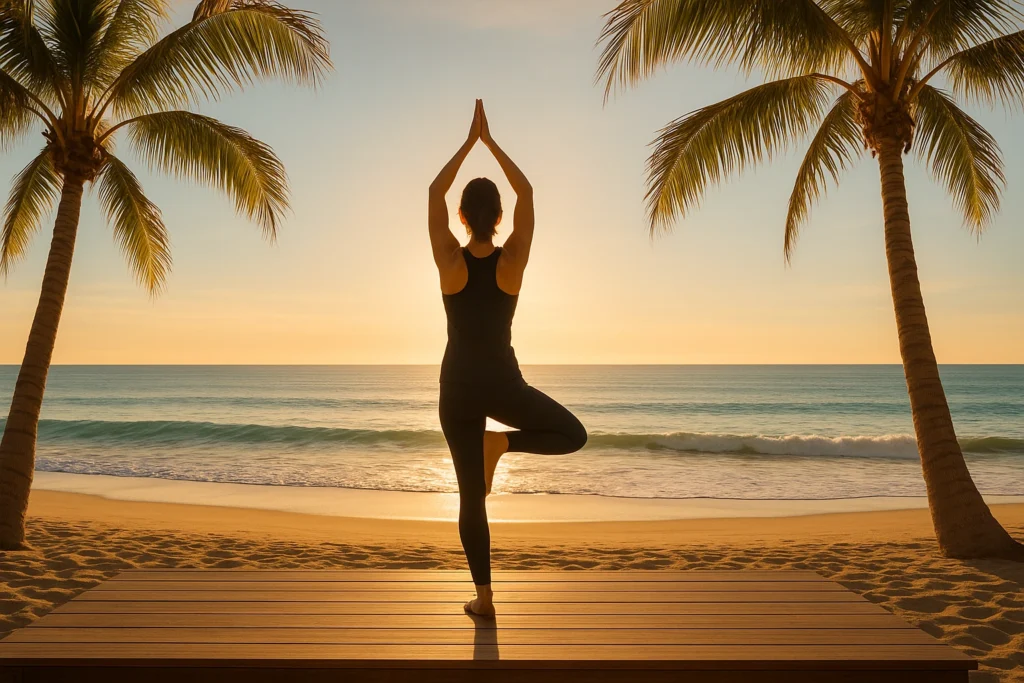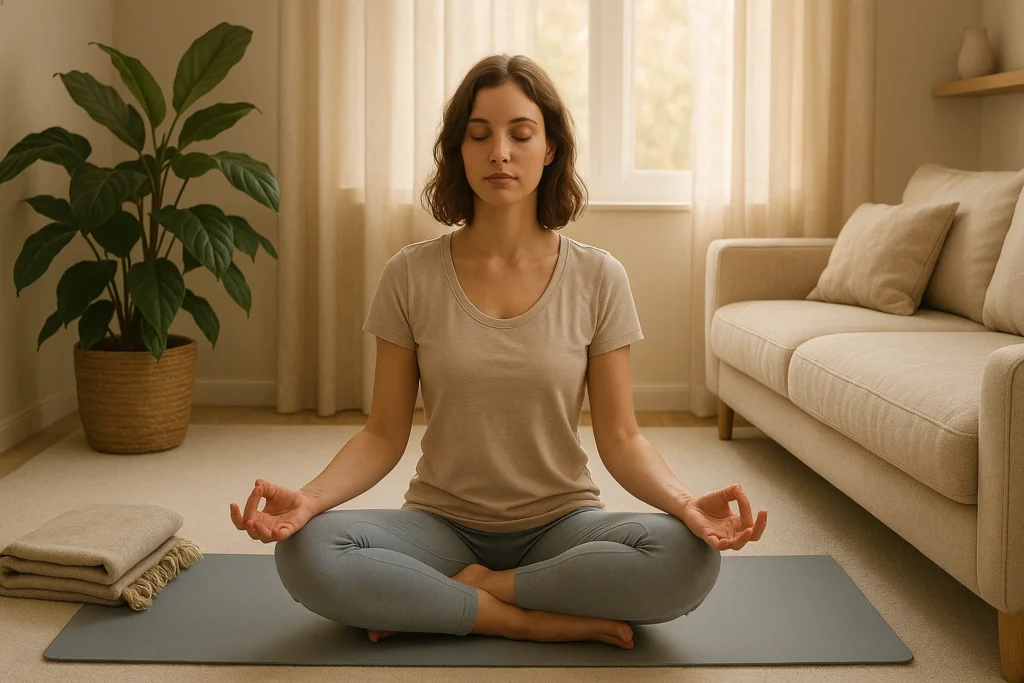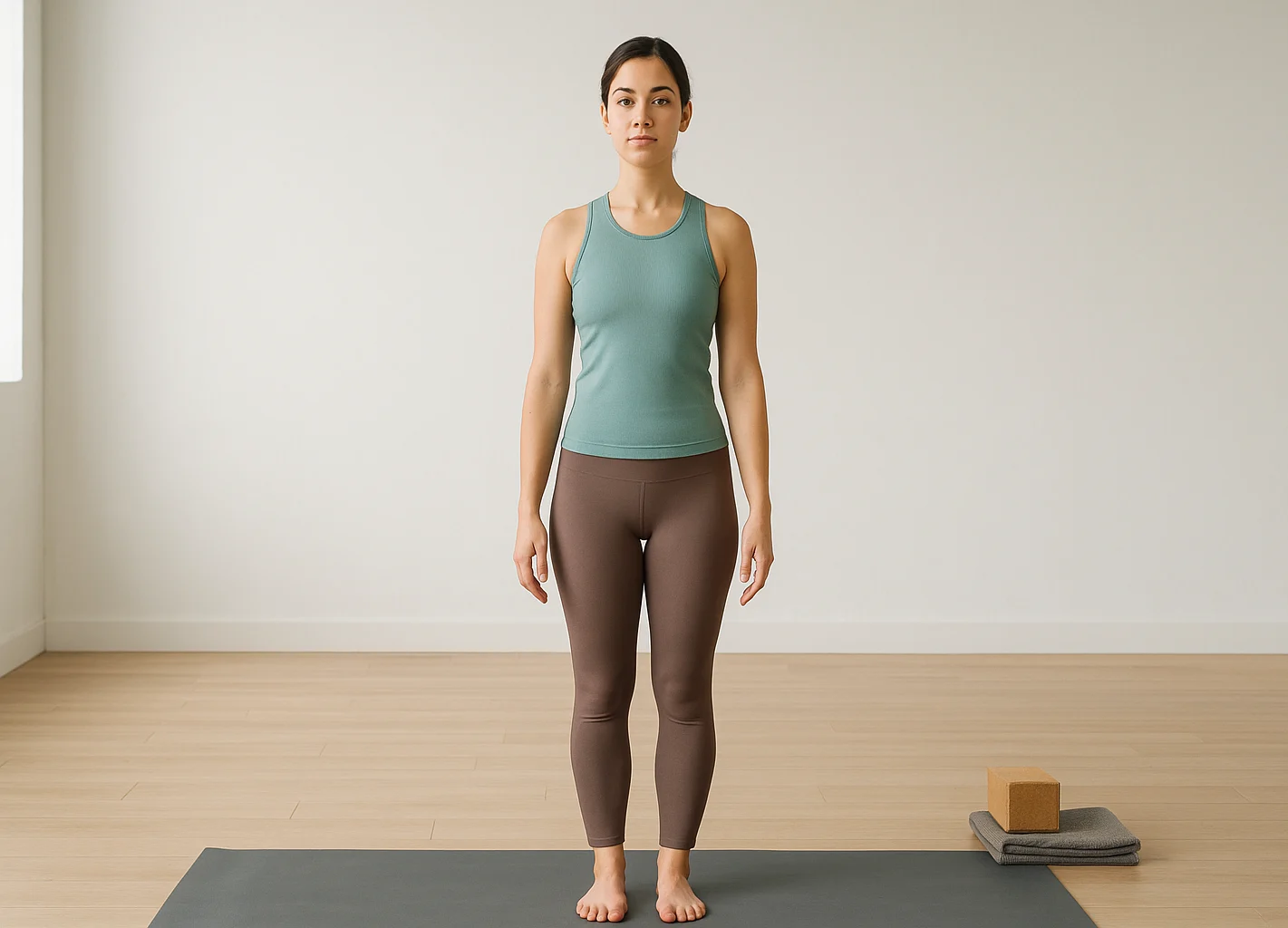
Do your flexible joints sometimes feel sore instead of strong? If you live with hypermobility, some classes can push past your comfort zone and leave you achy. The good news: yoga for hypermobile joints can shift your practice toward strength and stability instead of strain. With mindful movement and steady muscle engagement, you can move with more confidence and ease. For a bigger picture, see our guide to yoga for specialized health, which anchors this series.
This guide dives into hypermobility-friendly yoga—often called hypermobility yoga—showing you how to build strength, enhance body awareness, and create a stable foundation. Whether you’re new to yoga or looking to adapt your practice, you’ll find practical tips to protect your joints and feel stronger. Ready to begin a journey toward more comfortable movement?
Discover Your Yoga Style!Table of Contents
- What Is Hypermobility? (Getting Started)
- Why Strength Matters More Than Stretch (for Flexible Joints)
- Five Pillars of a Safe Practice (for Flexible Joints)
- Find Your Ideal Yoga Approach (Quiz)
- Stability-Building Poses (Strength Over Stretch)
- Poses to Avoid or Modify
- Finding the Right Yoga Class
- Real Stories of Strength
- Frequently Asked Questions
- Conclusion: Your Path to Stable Yoga
This post has affiliate links. We may earn a commission. Learn more.
What is Hypermobility? (Yoga for Hypermobile Joints 101)
Picture your joints as hinges on a door. For most people, these hinges have a set range of motion, stopped gently by ligaments and muscles. However, if you have hypermobile joints, your ligaments are more elastic, allowing your joints to move beyond the usual range—sometimes bending in ways that seem “double-jointed.” This extra flexibility, often seen in conditions like Ehlers-Danlos Syndrome, might sound like a gift, but it can pose challenges.
Because hypermobile ligaments offer less natural stability, your muscles must work harder to keep joints in place. Without sufficient strength, you might experience:
- Pain: Often a dull ache, but sometimes sharp, especially after activity.
- Fatigue: Muscles tire quickly from constant stabilizing.
- Clicking or Popping: Joints may shift slightly out of place.
- Subluxations or Dislocations: Joints partially or fully slip out of their sockets.
- Increased Injury Risk: Particularly in activities involving deep stretches or sudden movements.
Surprisingly, many people with hypermobility don’t realize it—they just think they’re “naturally flexible.” Understanding your body’s unique needs is the first step to practicing yoga safely. For deeper insights, explore our guide on yoga alignment principles to ensure proper form.
“Hypermobility isn’t a weakness; it’s a difference in how your body moves. Yoga can help you embrace that difference by building a foundation of strength.”
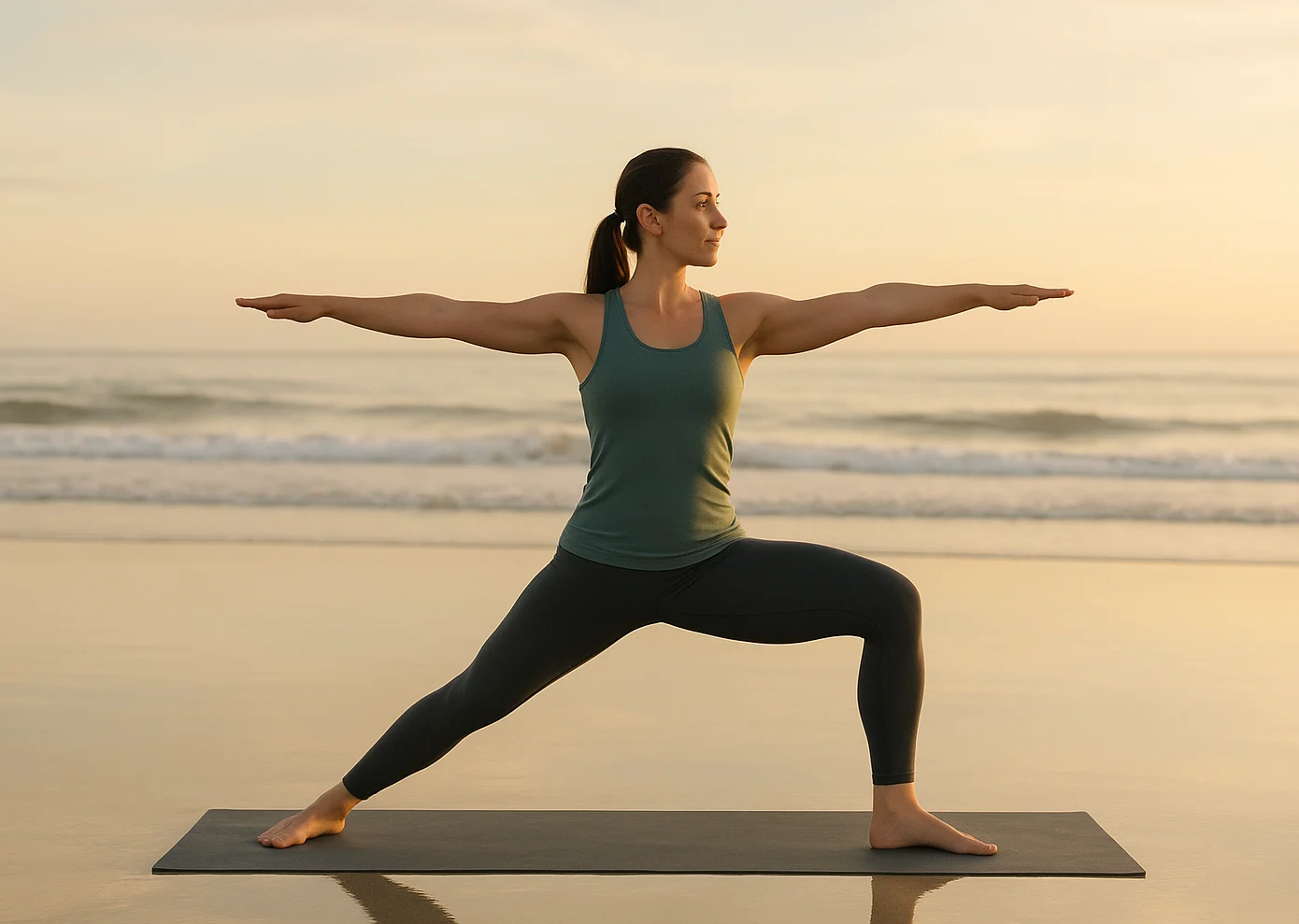
Why Strength Matters More Than Stretch in Yoga for Hypermobile Joints
Many classes chase flexibility with big stretches. If you’re hypermobile, that can tip into trouble—already-loose ligaments get pulled even more. A safer approach comes back to three basics:
- Building Muscle Strength: Let muscles be your joint “seatbelts.” Firm up the quads in standing poses and you’ll keep the knees tracking well and feeling supported.
- Enhancing Proprioception: Ever wonder how your body knows its position without looking? That’s proprioception—your body’s GPS. Hypermobility can dull this sense, but yoga sharpens it by helping you tune into subtle joint sensations.
- Controlled Movement: Moving slowly lets you engage the right muscles and avoid pushing joints too far.
By prioritizing strength over stretch, your yoga practice becomes a tool for stability, not a race to bend further. Many physical therapists emphasize strengthening the muscles that support lax joints, which may help reduce discomfort and support injury prevention. This is the heart of yoga for joint stability. To complement this approach, try incorporating yoga sequences for core strength to support your joints.
Five Pillars of Safe Yoga for Hypermobile Joints
Want yoga to support you, not wear you out? Try these five pillars—they’ll help you shape a practice that actually fits your body. For a wider context, see our pillar on yoga specialized health.
Pillar 1: Mindful Movement & Body Awareness
Ever rush a pose and feel a bit wobbly after? With hypermobility, slowing down really helps. A short pause gives your brain time to track joint position and builds body awareness.
- Move Slowly: Take your time moving in and out of poses, and notice how each joint feels.
- Feel Your Joints: In standing shapes, catch any knee hyperextension (that backward bend). Keep a soft micro-bend and turn your quads on.
- Use a Mirror: A quick glance helps you spot and fix alignment, especially when you’re learning.
Pillar 2: Prioritizing Muscle Engagement
Think of your muscles as the braces that keep joints steady. Active engagement gives lax joints the backup they need.
- Active Engagement Cues:
- “Hug the Midline”: In standing work, gently squeeze an imaginary block between your thighs. That inner-thigh activation steadies the hips.
- “Lift the Kneecap”: Lightly tighten the quads so the kneecaps draw up—simple cue, big protection for the knees.
- “Draw Shoulder Blades Down”: Pull shoulders down and back to stabilize the shoulder girdle.
- “Root Down, Lift Up”: Press through your feet and lengthen through your head for grounded stability.
- Slight Bend, Strong Hold: Avoid locking knees or elbows. A micro-bend keeps muscles active, preventing strain on ligaments.
Pillar 3: Avoiding End-Range of Motion
With joint hypermobility, end-range positions are where trouble starts. Instead of chasing depth, focus on control. Using props can make a big difference—check out our guide on essential yoga props for tips on choosing blocks and straps.
- Stop Before the Stretch: If you feel a strong stretch, you’ve likely gone too far—ligaments, not muscles, are stretching.
- Use Props Generously:
- Blocks: Slide them under your hands in folds so the elbows don’t lock out.
- Straps: “Raise” the floor to meet you and skip the strain.
- Blankets: Cushion knees or wrists so the work stays in the muscles.
- Bolsters: Make restoratives supportive, not deep or floppy.
- Modify Poses: Tweak every shape to fit you—comfort and control beat picture-perfect angles.
Pillar 4: Core Stability as Your Foundation
Think of your core as the anchor—it supports the spine and keeps joints from wobbling.
- Engage Your Deep Core: Draw your belly button toward your spine, like zipping tight pants, to activate the transverse abdominis.
- Core-Focused Breathing: Exhale while gently pulling your lower belly in to connect breath and core.
- Integrate Core Work: Maintain gentle core engagement in all poses to protect your lower back.
Pillar 5: Breathing for Stability
Breathing isn’t just for relaxation—it also boosts stability in hypermobility-focused yoga. Diaphragmatic breathing may support your core and help ease tension. For more techniques, see our beginner breathwork guide.
- Belly Breathing: Inhale deeply, letting your belly expand, then exhale, drawing your navel in. This can help activate your deep core.
- 4-7-8 Breath: Inhale for 4, hold for 7, exhale for 8 to calm your nervous system and focus on muscle engagement.
- Breathe with Movement: Sync your breath with poses, exhaling during effort (e.g., lifting into Bridge Pose) to stabilize joints.
Find Your Ideal Yoga Approach for Hypermobile Joints
Take this quick quiz to discover the best yoga style and focus for your hypermobile joints.
Yoga for Joint Stability: Poses That Build Control
Use the strength-over-stretch mindset with these poses to build real-world stability. Bring the five pillars into each one.
Standing Poses for Grounding
Standing poses strengthen your legs and core, boosting balance.
- Mountain Pose (Tadasana):
- How to: Stand with feet hip-width apart. Root through all four corners of your feet. Lift kneecaps, engage core, draw shoulders down, and lengthen through your head.
- Why it helps: Teaches full-body engagement without stretching, building proprioception.
- Warrior II (Virabhadrasana II):
- How to: Step one foot back and turn it slightly out. Bend the front knee until it stacks over the ankle. Keep the knee tracking over the toes. Gently draw the inner thighs toward each other. Reach the arms long and relax the shoulders.
- Why it helps: Builds leg, hip, and core strength with extra attention on knee and hip control.
- Tree Pose (Vrksasana):
- How to: From Mountain, stand on one foot. Set the other foot at the ankle, calf, or thigh (skip the knee). Press foot and leg into each other and settle your gaze.
- Why it helps: Trains balance and fires the small stabilizers through the leg and hip.
Core & Abdominal Strengthening
Your core ties everything together—train it so your joints feel steadier, not shakier.
- Cat-Cow (Marjaryasana-Bitilasana):
- How to: Start on hands and knees: wrists under shoulders, knees under hips. Inhale to gently open the chest (Cow) without dumping the belly; exhale to round (Cat) and feel the core switch on. Keep the tempo unhurried.
- Why it helps: Smooths spinal motion and tightens the core-breath link.
- Plank Pose (Phalakasana):
- How to: From hands and knees, step the legs back to one long line. Stack hands under shoulders, brace the core, and keep the hips level. Drop the knees anytime.
- Why it helps: Builds total-body strength—extra payoff for core and shoulders. Keep a soft bend in the elbows.
- Boat Pose (Paripurna Navasana):
- How to: Sit with knees bent, feet down. Tip back a touch, brace the core, and float the feet so shins come parallel. Reach the arms forward or keep fingertips down. Stay tall through the spine.
- Why it helps: Targets the deep core that supports the spine and hips.
Mindful Stretching in Flexible Joint Yoga
In flexible joint yoga, strength leads, but light, active mobility work helps with the usual tight spots. Stay shy of end range—no hanging in the joints.
- Reclined Hand-to-Big-Toe Pose with Strap (Supta Padangusthasana):
- How to: Lie back and loop a strap around one foot. Lift that leg toward the ceiling with a soft bend in the knee. Use the strap to guide—not yank—so you feel the hamstrings, not the joint. Keep the other leg anchored.
- Why it helps: Gives a hamstring stretch you can dial in precisely with the strap.
- Gentle Hip Flexor Stretch (Low Lunge):
- How to: In a low lunge, place one knee on the ground (use padding). Keep front knee over ankle. Shift forward slightly to feel a mild stretch in the back hip. Engage glutes to protect your back.
- Why it helps: Loosens tight hip flexors without cranking the joint.
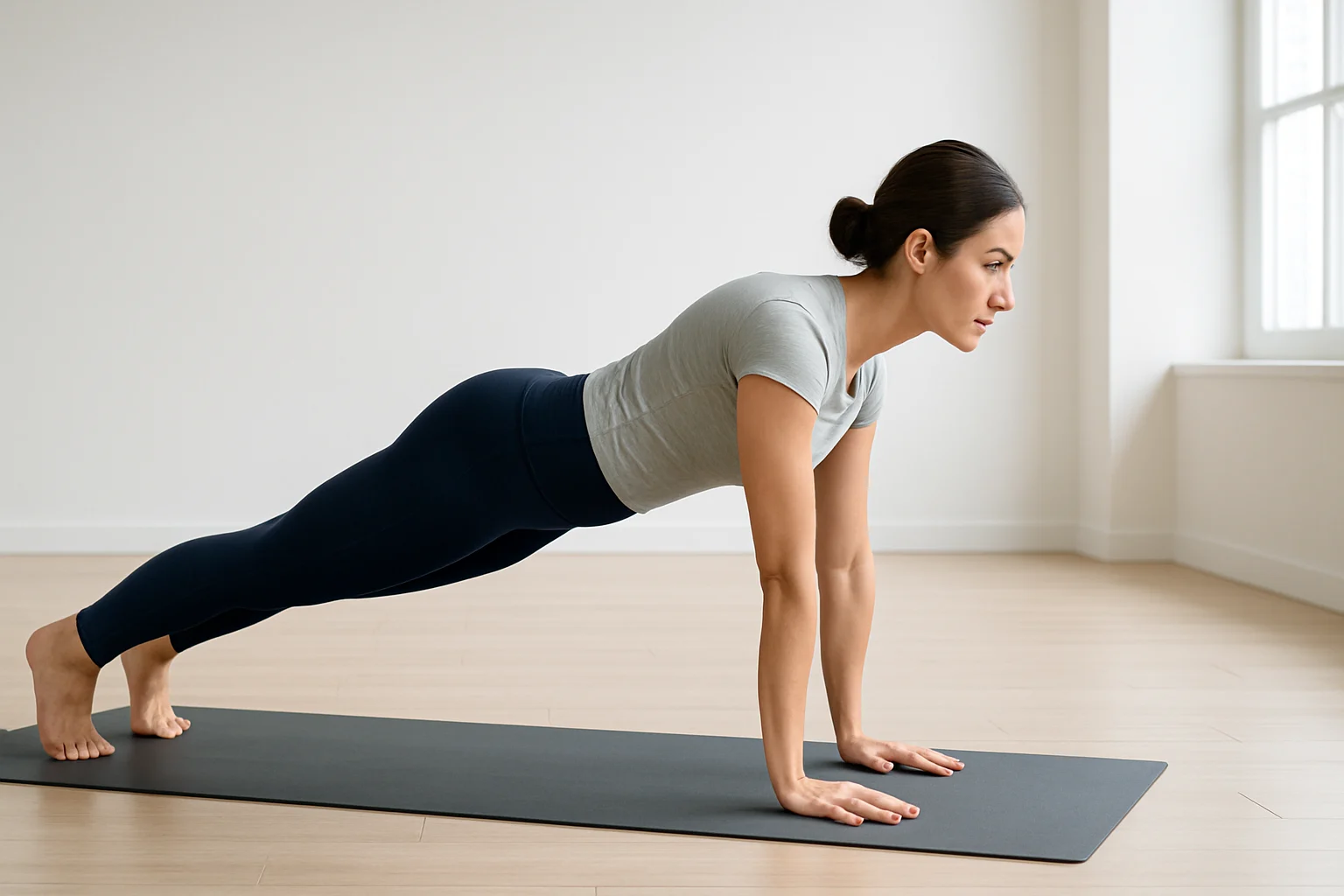
Poses to Avoid or Modify
Avoiding the usual tripwires matters as much as doing the right things. Watch out for:
- Deep passive stretches: Skip locked-knee folds, splits, and deep straddles—they tug on ligaments more than muscles.
- Long holds in stretching poses: Keep them brief—about 20–30 seconds—and stay actively engaged.
- Weight-bearing on locked joints: Don’t “hang” in the elbows (Plank) or knees (standing). Keep a small, active bend instead.
- Aggressive Adjustments: Politely decline teacher adjustments that push you deeper.
- Hot Yoga: Heat may increase ligament laxity for some people, which could raise injury risk. Proceed cautiously.
Finding the Right Yoga Class
Not all yoga classes suit hypermobile joints. If you’re looking for hypermobility yoga, here’s how to choose wisely:
- Anatomy-Savvy Teachers: Seek instructors trained in alignment and modifications, ideally with therapeutic yoga or hypermobility knowledge. Consider exploring yoga teacher training programs to understand what qualifications to look for.
- Communicate needs: Let your teacher know you’re prioritizing stability work and clear form cues over depth.
- Smaller classes: Choose small groups or a private session—more eyes on your form, fewer risky pushes.
- Try different styles: Hatha or Iyengar (alignment-first) usually beats fast Vinyasa if you’re managing hypermobility.
Real Stories of Strength
Sarah, 32, has hypermobile shoulders and knees. She’d avoided exercise for years, worried about injury. “Regular yoga classes left me in pain,” she recalls. “My knees hyperextended in Warrior poses, and my shoulders felt unstable in Downward Dog.”
Things shifted once Sarah worked with a teacher who knew hypermobility. “She had me keep a tiny bend in my joints and really switch my core on,” Sarah says. “It started to feel more like strength work than stretching.” After a few months, her knees felt calmer and her shoulders steadier—yoga became her go-to.
John, 40, dealt with a nagging hip ache. With mindful Warrior II and consistent Bridge work, he built glute strength. “I can walk without that ache now,” he says. These stories show how steady practice can help.
Frequently Asked Questions
Conclusion: Your Path to Stable Yoga
If you’re hypermobile, treat yoga as a path to empowerment. Trade chasing depth for mindful strength and you’ll build steadier joints. Use the five pillars, keep the muscles engaged, and listen to your body. Start easy, stay patient, and celebrate small wins—your joints will notice.
